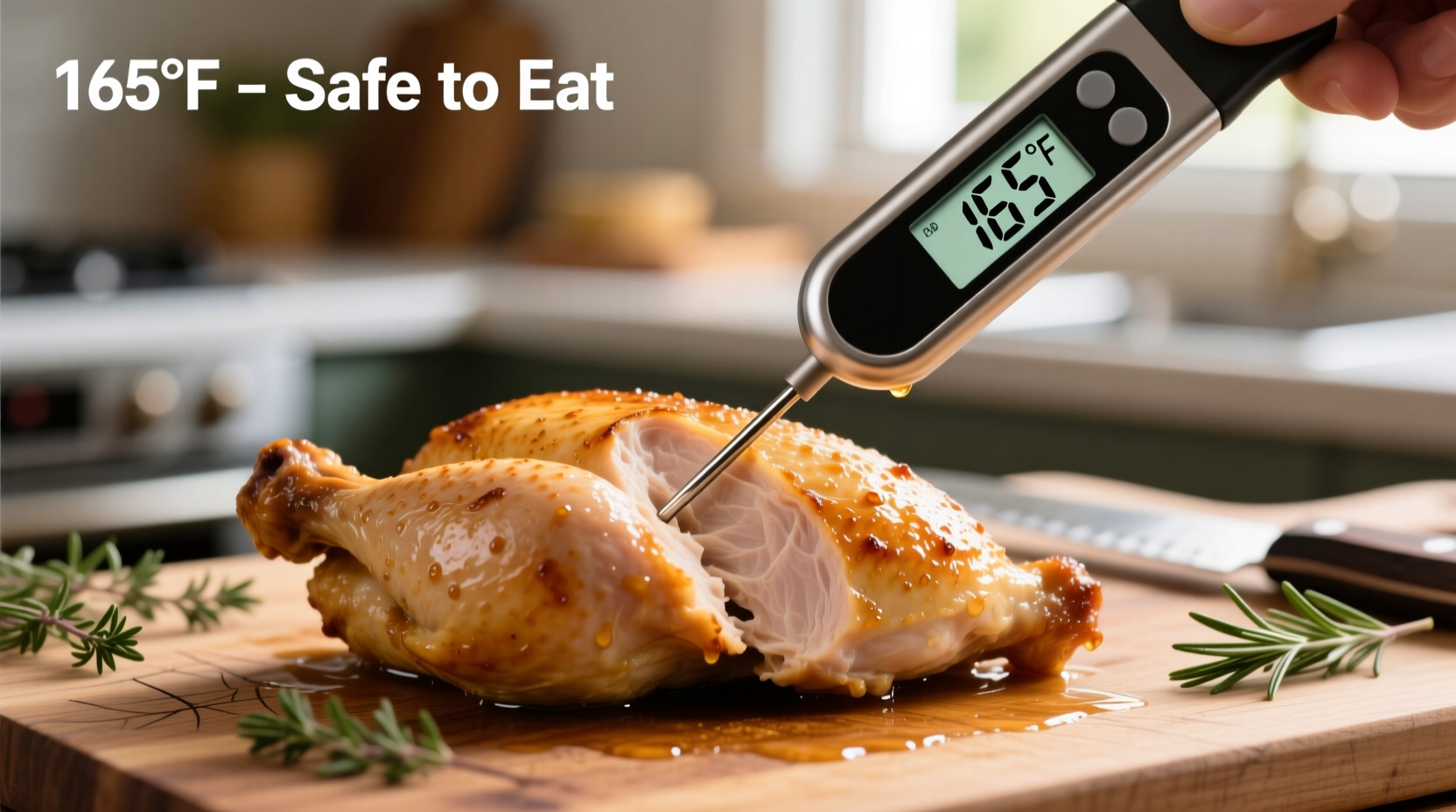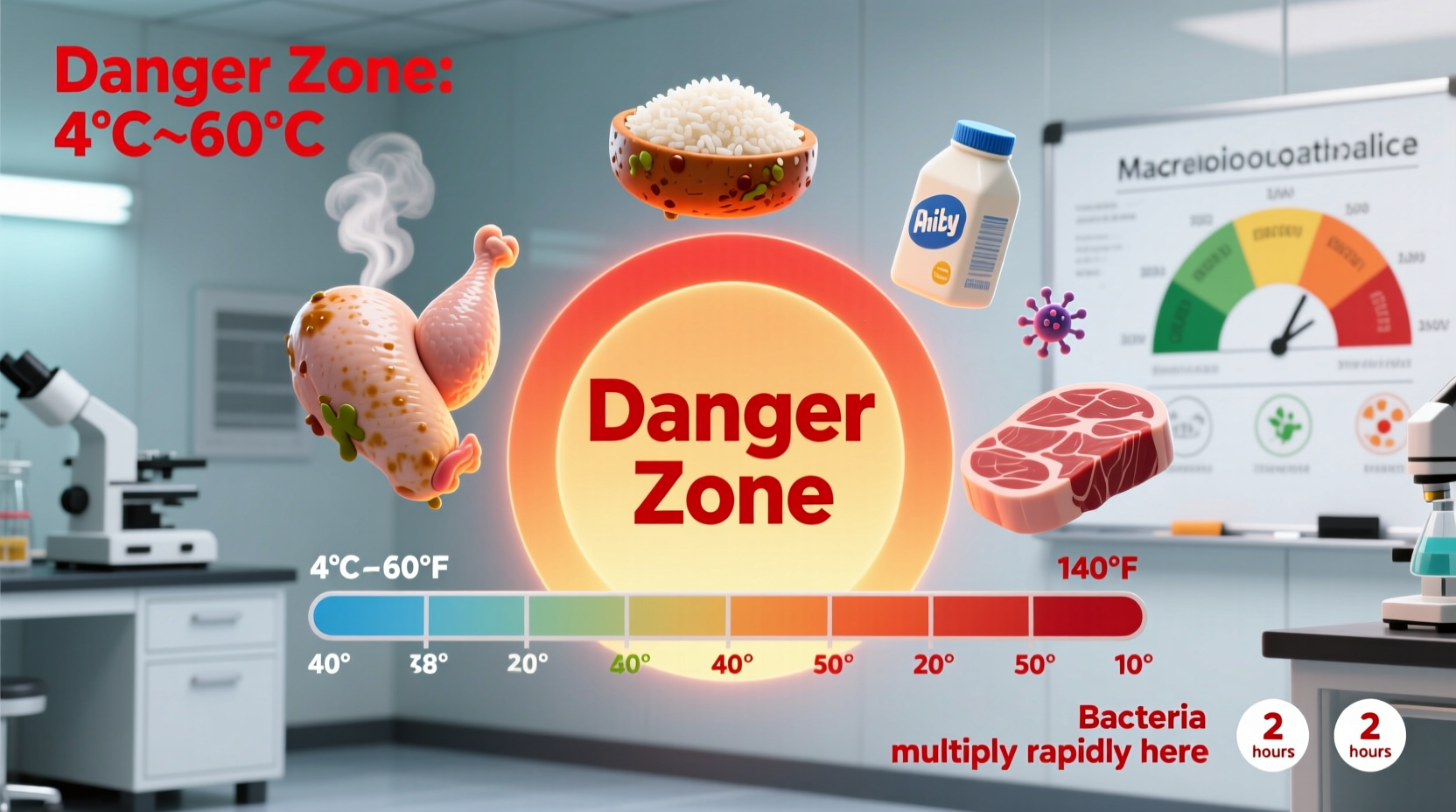Why Understanding the Food Danger Zone Could Save Your Health
Every year, 48 million Americans get sick from foodborne illnesses, with 128,000 hospitalizations and 3,000 deaths according to the CDC. The primary culprit? Food lingering in the danger zone. This critical temperature range isn't just a cooking guideline—it's your first line of defense against pathogens like Salmonella, E. coli, and Listeria that cause serious illness.
What Exactly Happens in the Danger Zone?
When food sits between 40°F and 140°F, conditions become perfect for bacterial growth. Proteins denature, moisture becomes readily available, and pathogens enter their exponential growth phase. The FDA Food Code explains that certain bacteria can double every 20 minutes under these conditions. That single bacterium can become over 16 million in just 8 hours—enough to make multiple people seriously ill.
| Temperature Range | Bacterial Activity | Food Safety Status |
|---|---|---|
| Below 40°F (4°C) | Most bacteria growth slows significantly | Safe for storage |
| 40°F-140°F (4°C-60°C) | Rapid multiplication (doubling every 20 min) | Danger Zone - Avoid |
| Above 140°F (60°C) | Most bacteria begin to die | Safe for serving |
| Above 165°F (74°C) | Pathogens destroyed rapidly | Safe cooking temperature |
Time Limits You Must Follow in the Danger Zone
The two-hour rule is your food safety lifeline. According to USDA Food Safety and Inspection Service guidelines, perishable foods should never remain in the danger zone for more than 2 hours. When temperatures exceed 90°F (32°C), this window shrinks to just 1 hour. This isn't arbitrary—it's based on bacterial growth models showing when pathogen levels reach dangerous thresholds.

Practical Danger Zone Defense Strategies
Cooling Hot Foods Properly
Divide large portions into shallow containers no deeper than 2 inches. Use an ice-water bath for rapid cooling of soups and sauces. The FDA recommends cooling food from 135°F to 70°F within 2 hours, then to 41°F or below within an additional 4 hours.
Safe Holding Temperatures for Buffets
Maintain hot foods at 140°F or above using chafing dishes, slow cookers, or warming trays. Keep cold foods at 40°F or below in containers nested in ice. Never combine fresh and previously served food—this creates dangerous temperature gradients.
Transportation Safety for Picnics and Potlucks
Use insulated coolers with sufficient ice packs to maintain 40°F or below. Pack foods directly from the refrigerator into coolers. Keep coolers in shaded areas and minimize opening. For hot foods, use insulated containers that maintain 140°F or above.
Critical Cooking Temperatures to Exit the Danger Zone
Knowing when food has safely passed through the danger zone is crucial. The USDA provides specific minimum internal temperatures:
- Poultry (whole or ground): 165°F (74°C)
- Ground meats (beef, pork, veal, lamb): 160°F (71°C)
- Fish and seafood: 145°F (63°C) or until flesh flakes easily
- Beef, pork, veal, lamb steaks, roasts: 145°F (63°C) with 3-minute rest time
- Leftovers and casseroles: 165°F (74°C)
Special Considerations for High-Risk Groups
Pregnant women, young children, older adults, and immunocompromised individuals face higher risks from foodborne pathogens. The FDA Food Code emphasizes that for these populations, even slightly undercooked foods can cause severe complications. Extra precautions include avoiding raw sprouts, unpasteurized dairy, and undercooked eggs.
Debunking Common Danger Zone Myths
Myth: "If it smells fine, it's safe to eat."
Reality: Pathogenic bacteria often don't produce noticeable odors or visible changes until dangerous levels are reached.
Myth: "A little pink in the middle is okay for ground beef."
Reality: Color is unreliable—ground meats must reach 160°F internally regardless of appearance.
Myth: "Room temperature thawing is convenient and safe."
Reality: Outer layers enter the danger zone while the center remains frozen, creating perfect conditions for bacterial growth.
Essential Tools for Danger Zone Management
Invest in an instant-read digital thermometer—your most important food safety tool. Calibrate it regularly using ice water (32°F/0°C) or boiling water (212°F/100°C at sea level). Place thermometers in refrigerators and freezers to monitor actual temperatures, not just rely on dial settings.











 浙公网安备
33010002000092号
浙公网安备
33010002000092号 浙B2-20120091-4
浙B2-20120091-4